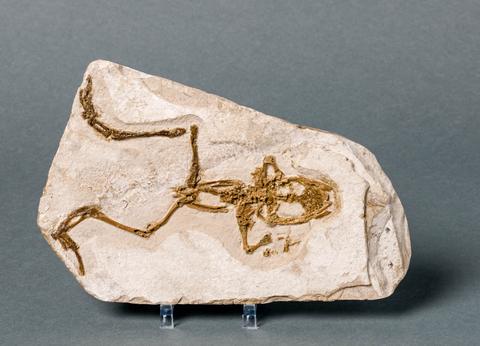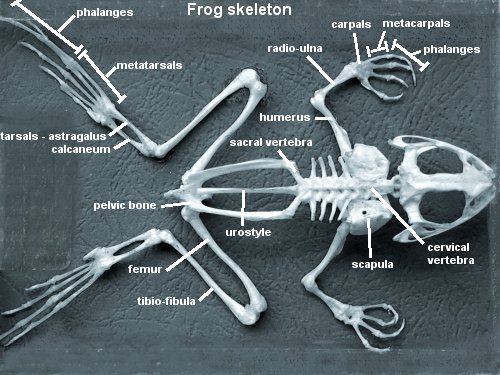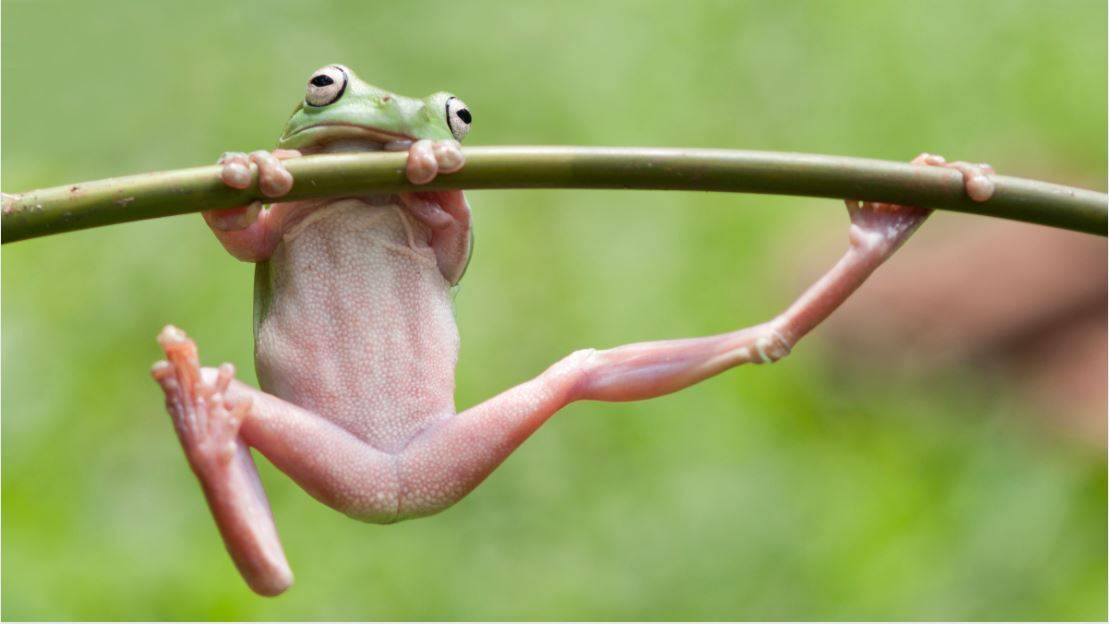
Frog fossil from Bosnia (Miocene). Date at an artificial timeline of 23.03 million years - 5.333 million years ago.

Skeleton of a modern frog with anatomical descriptions.
Long ages without change poses a difficulty for the theory of evolution. A frog not in an intermediate state between frog and some other animal, or distinguishable as anything but a frog shows that the Bible offers a more probable description of the world as we see it.
Genesis 1:24
New International Version
And God said, “Let the land produce living creatures according to their kinds: the livestock, the creatures that move along the ground, and the wild animals, each according to its kind.” And it was so.

A tree frog (or treefrog) is any species of frog that spends a major portion of its lifespan in trees, known as an arboreal state
As the name implies, these frogs are typically found in trees or other high-growing vegetation. They do not normally descend to the ground, except to mate and spawn, though some build foam nests on leaves and rarely leave the trees at all as adults.
Tree Frogs are usually tiny as their weight has to be carried by the branches and twigs in their habitats. While some reach 10 cm (4 in) or more, they are typically smaller and more slender than terrestrial frogs. Treefrogs typically have well-developed discs at the finger and toe tips; the fingers and toes themselves, as well as the limbs, tend to be rather small, resulting in a superior grasping ability. The genus Chiromantis of the Rhacophoridae is most extreme in this respect: it can oppose two fingers to the other two, resulting in a vise-like grip.



